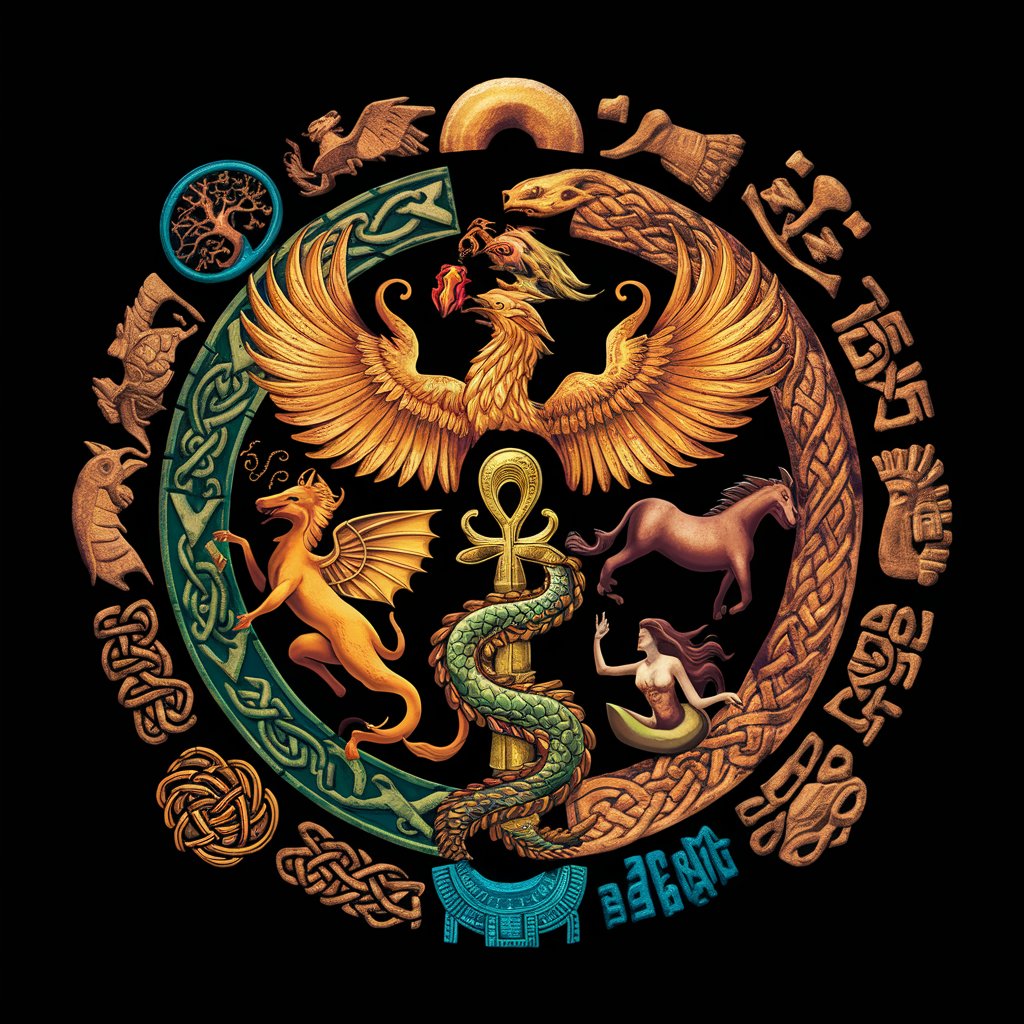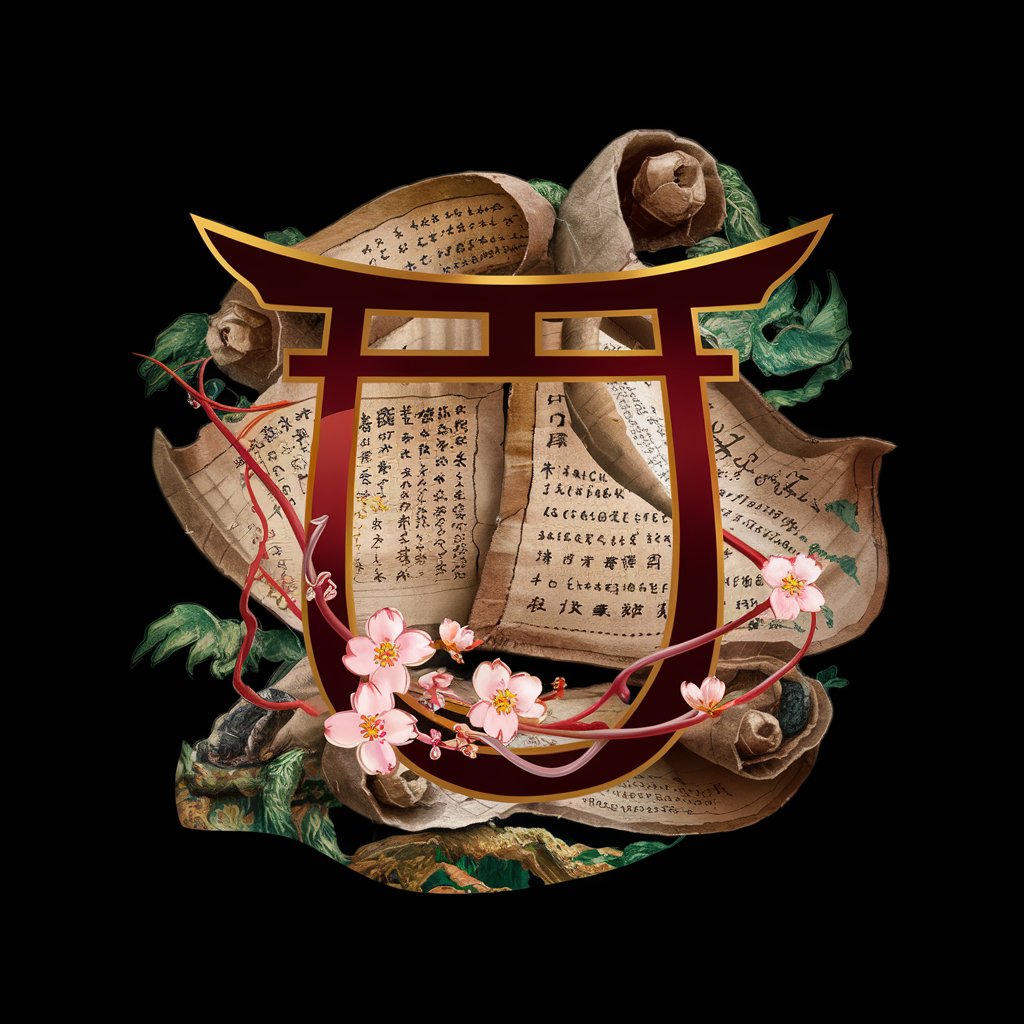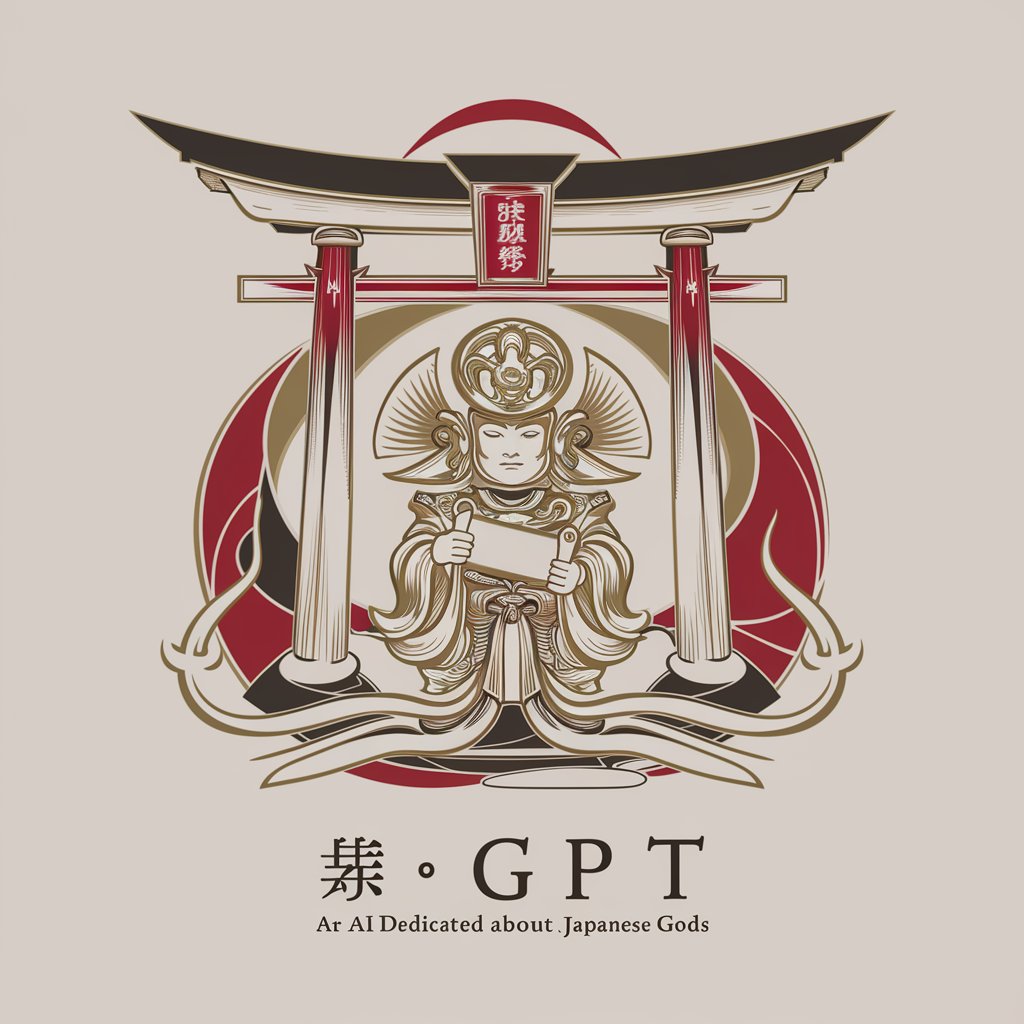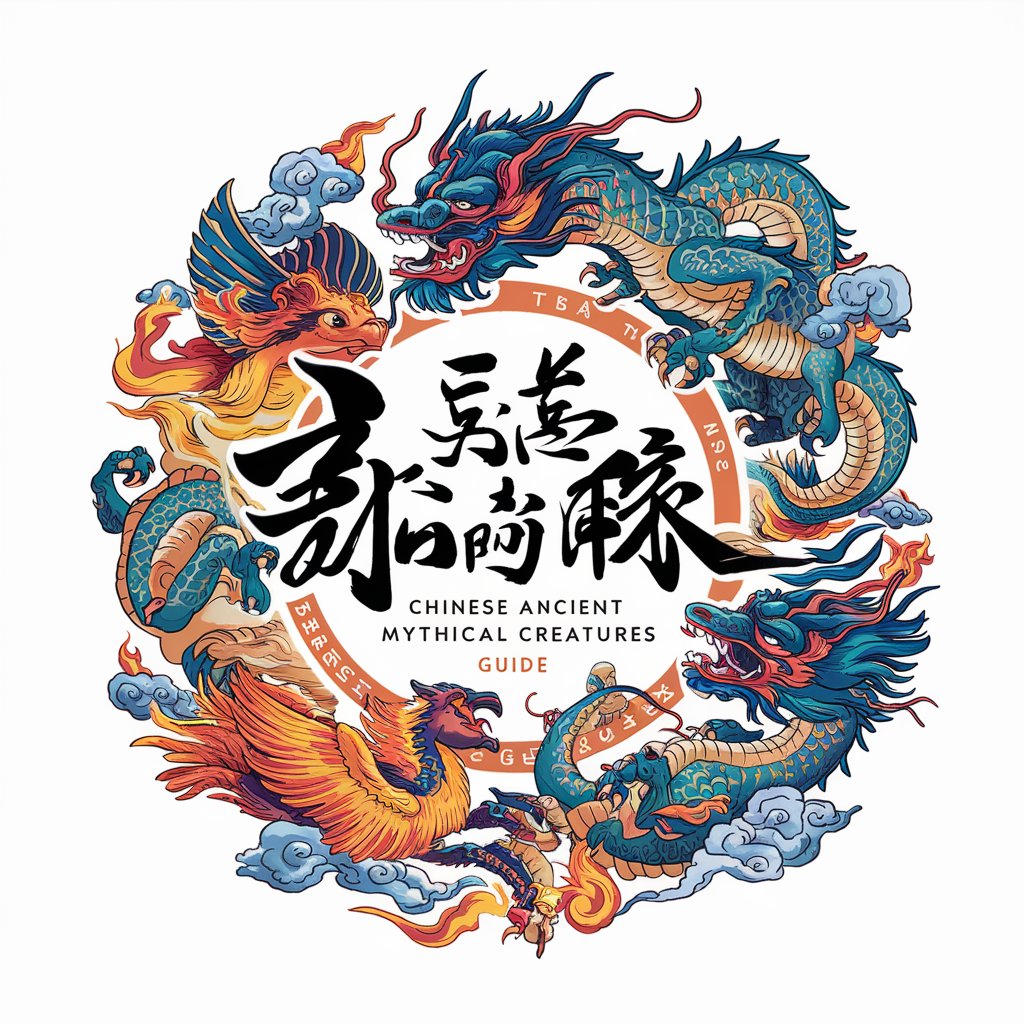
古事記 Kojiki, Ancient Japanese History and Myth - Ancient Japanese Mythology Guide
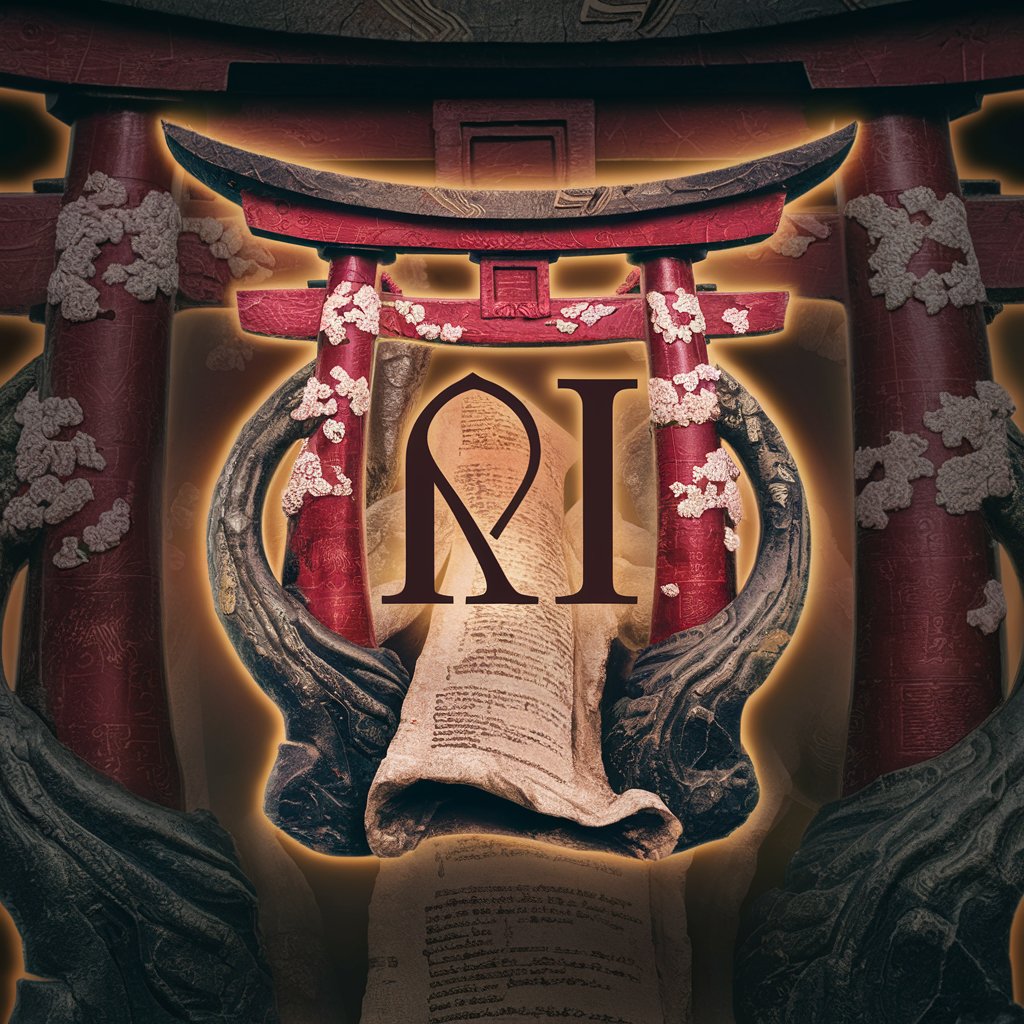
Welcome to the world of ancient Japanese myths and history.
Unveiling Japan's Mythical Past with AI
Explain the significance of Amaterasu in the Kojiki.
Describe the lineage of the gods according to the Kojiki.
What are the major myths surrounding Susanoo in the Kojiki?
Detail the creation story of Japan as described in the Kojiki.
Get Embed Code
Overview of Kojiki, Ancient Japanese History and Myth
The Kojiki, or 'Record of Ancient Matters,' is Japan's oldest extant chronicle, compiled in 712 AD under the order of Empress Genmei. It is a crucial document for understanding the genesis of Japanese culture, history, and mythology. The Kojiki encompasses creation myths, divine genealogies, and the legends of the gods and imperial ancestors, tracing the lineage of the imperial family back to the sun goddess Amaterasu. It blends historical accounts with mythological elements to establish the divine origin of the imperial line and legitimizes the political and cultural hegemony of the Yamato state. Through narratives such as the descent of the heavenly grandchild to Izumo, the exile of the deity Susanoo, and the adventures of deities like Okuninushi and the siblings Umisachi and Yamasachi, the Kojiki offers rich insights into ancient Japanese beliefs, values, and societal norms. Its compilation was part of a broader effort to record and codify the historical and mythological heritage of Japan, influenced by similar Chinese practices, aimed at reinforcing the authority and sanctity of the imperial institution. Powered by ChatGPT-4o。

Functions and Applications of Kojiki, Ancient Japanese History and Myth
Cultural and Historical Education
Example
A historian researching the origins of Japanese imperial rituals uses the Kojiki to understand the mythological basis of these practices.
Scenario
In academic settings, educators and scholars utilize the Kojiki as a primary source to teach ancient Japanese culture, religion, and the historical context of early Japan. It serves as a foundational text in courses on Japanese history, mythology, and literature.
Mythological Analysis and Comparative Studies
Example
A comparative mythologist examines the creation myths in the Kojiki alongside those from other cultures to identify universal themes and unique aspects of Japanese myth.
Scenario
Researchers and enthusiasts of mythology use the Kojiki to explore the structure, motifs, and themes of Japanese myths, comparing them with global mythologies to gain insights into cross-cultural influences and the distinct characteristics of Japanese mythological narratives.
Literary and Artistic Inspiration
Example
A novelist draws on the tale of Amaterasu and Susanoo's conflict from the Kojiki to craft a fantasy novel that reimagines these deities in a modern setting.
Scenario
Artists, writers, and creators look to the Kojiki for inspiration in their works, leveraging its rich tapestry of gods, heroes, and mythical tales to create literature, films, music, and art that echo the themes, characters, and stories of ancient Japan.
Spiritual and Religious Context
Example
Shinto practitioners reference the Kojiki for rituals and festivals, connecting with the deities and ancestral spirits detailed in the text.
Scenario
For followers of Shinto and individuals interested in Japanese spiritual practices, the Kojiki provides a foundational understanding of the kami (deities), rituals, and cosmology integral to Shinto beliefs, serving as a guide for religious ceremonies and personal spiritual exploration.
Target User Groups for Kojiki, Ancient Japanese History and Myth Services
Academics and Students
Individuals engaged in the study of Japanese history, culture, literature, and religion, including historians, literary scholars, and students, benefit from the Kojiki's comprehensive depiction of Japan's mythological and historical beginnings, facilitating scholarly research, education, and a deeper understanding of Japanese heritage.
Mythology Enthusiasts
Those fascinated by mythology, folklore, and the comparative study of myths find the Kojiki a valuable resource for exploring the unique aspects of Japanese myths and their place within the global mythological landscape.
Creative Professionals
Writers, artists, filmmakers, and other creative professionals seeking inspiration from Japan's ancient myths and legends use the Kojiki as a source material for crafting narratives, artworks, and media that resonate with themes of heroism, divinity, and the human condition as seen through the lens of Japanese mythology.
Spiritual Seekers and Shinto Practitioners
Individuals interested in Shinto, Japanese spiritual practices, and those seeking to connect with or understand the religious aspects of Japan's ancient past utilize the Kojiki as a guide to the gods, rituals, and beliefs that shape Shinto and its practices today.

Using Kojiki, Ancient Japanese History and Myth
Initial Access
Visit yeschat.ai for a free trial without login, also no need for ChatGPT Plus.
Identify Interest Area
Determine your specific area of interest within the Kojiki, whether it's mythology, ancient history, cultural studies, or religious aspects.
Engage with the Tool
Interact with the tool by asking specific questions or seeking clarifications on various topics within the Kojiki, such as myths, legends, or historical events.
Utilize for Research
Use the tool to aid in academic research, writing papers, or preparing presentations by requesting detailed explanations or analyses of Kojiki stories and their historical context.
Explore Beyond Text
Leverage the tool for creative inspiration or cultural understanding, exploring how ancient myths and history influence modern Japanese culture and society.
Try other advanced and practical GPTs
Olympian Creator
Turn Yourself into a Greek God
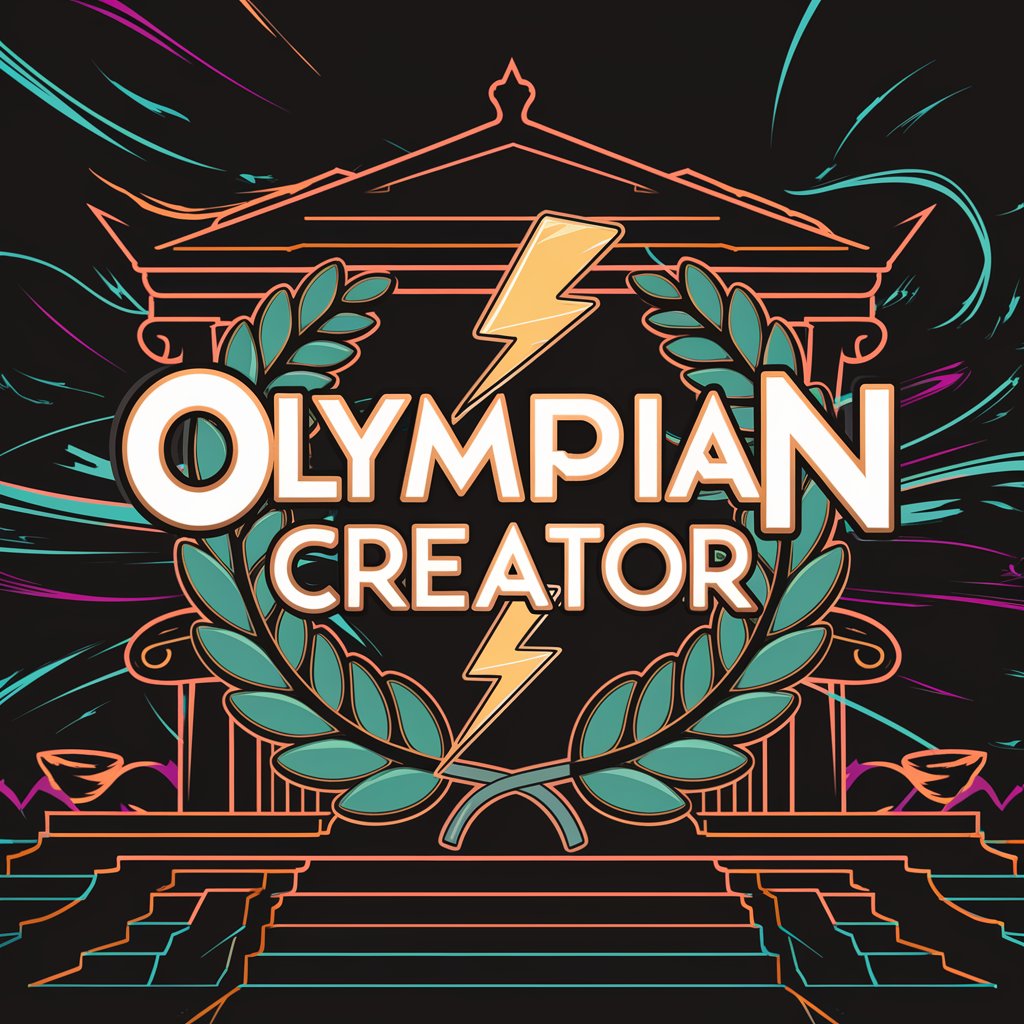
Bleeding Heart
Sharpen Your Wit with AI

ネーミング達人
Craft Perfect Names with AI
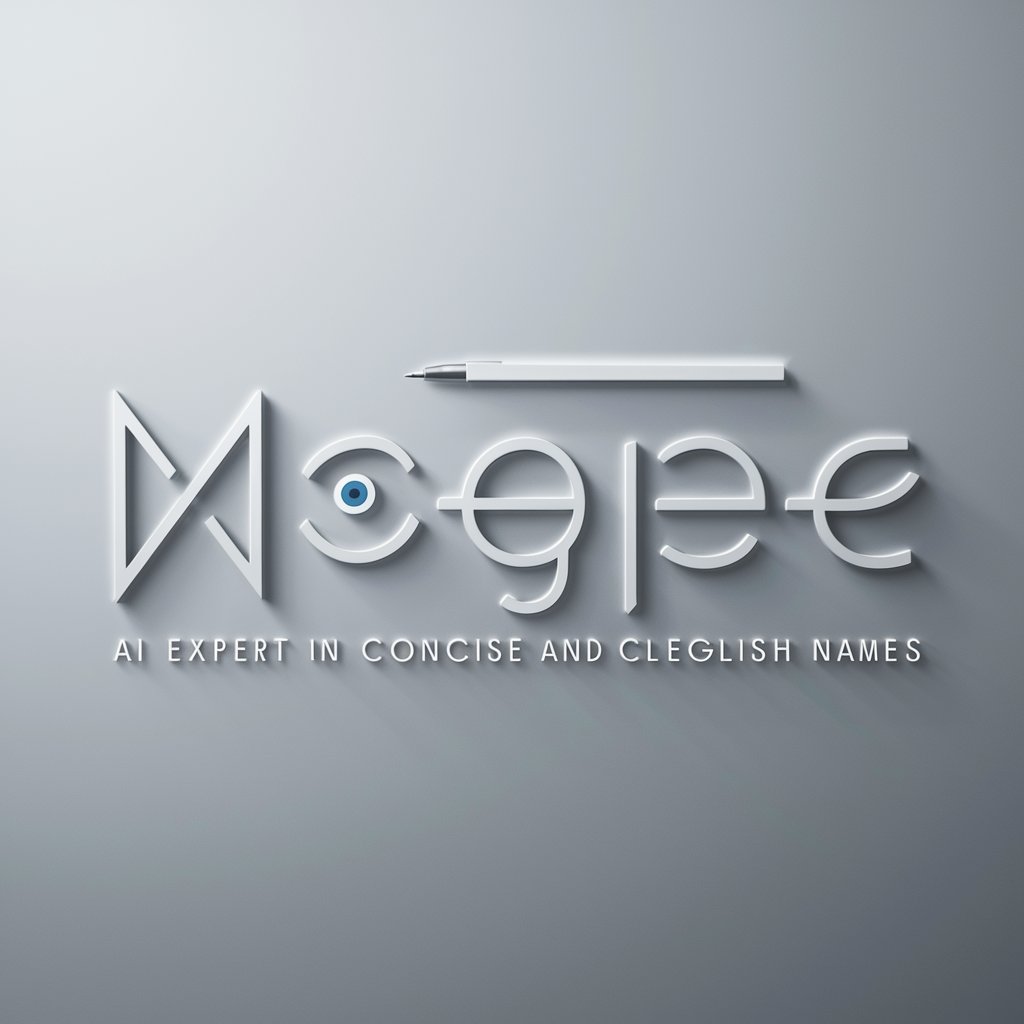
Wisdom Council
Empowering decisions with AI-guided wisdom

Viral Voice
Elevate Your Broadcasts with AI Creativity

Art Creator
Inspire your creativity with AI

TRPG Storysmith
Craft Your Epic. AI-Powered Storytelling.
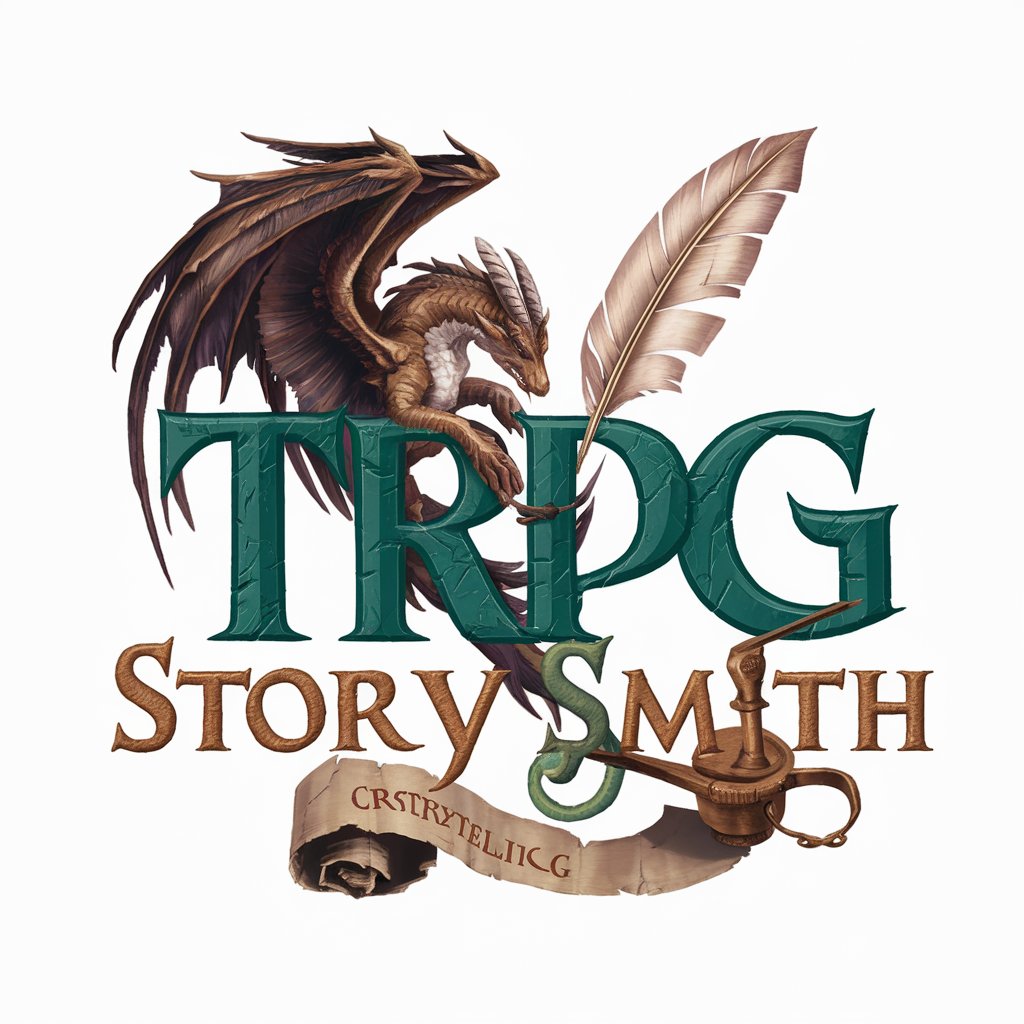
APUSH Exam Guru
Master APUSH with AI-Powered Practice
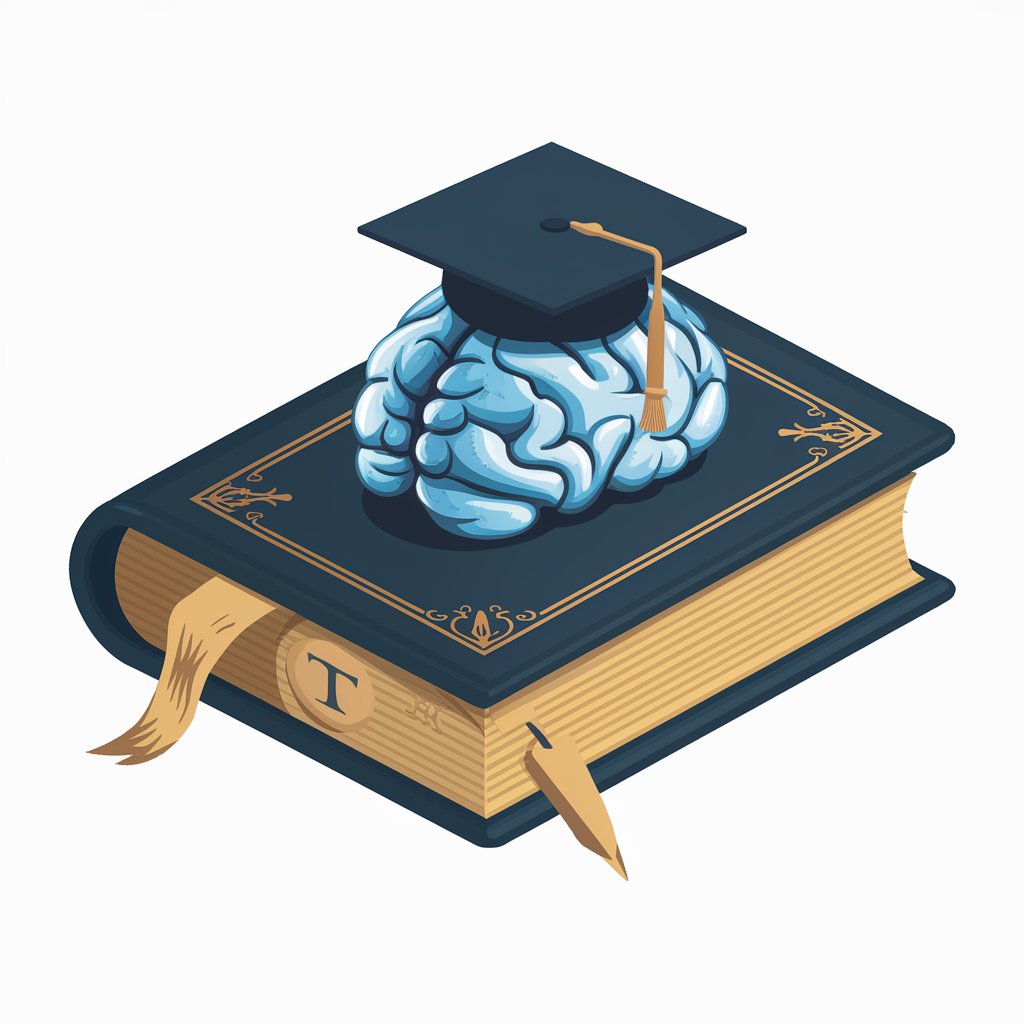
Thích Nhất GPT
AI-driven Mindfulness Companion
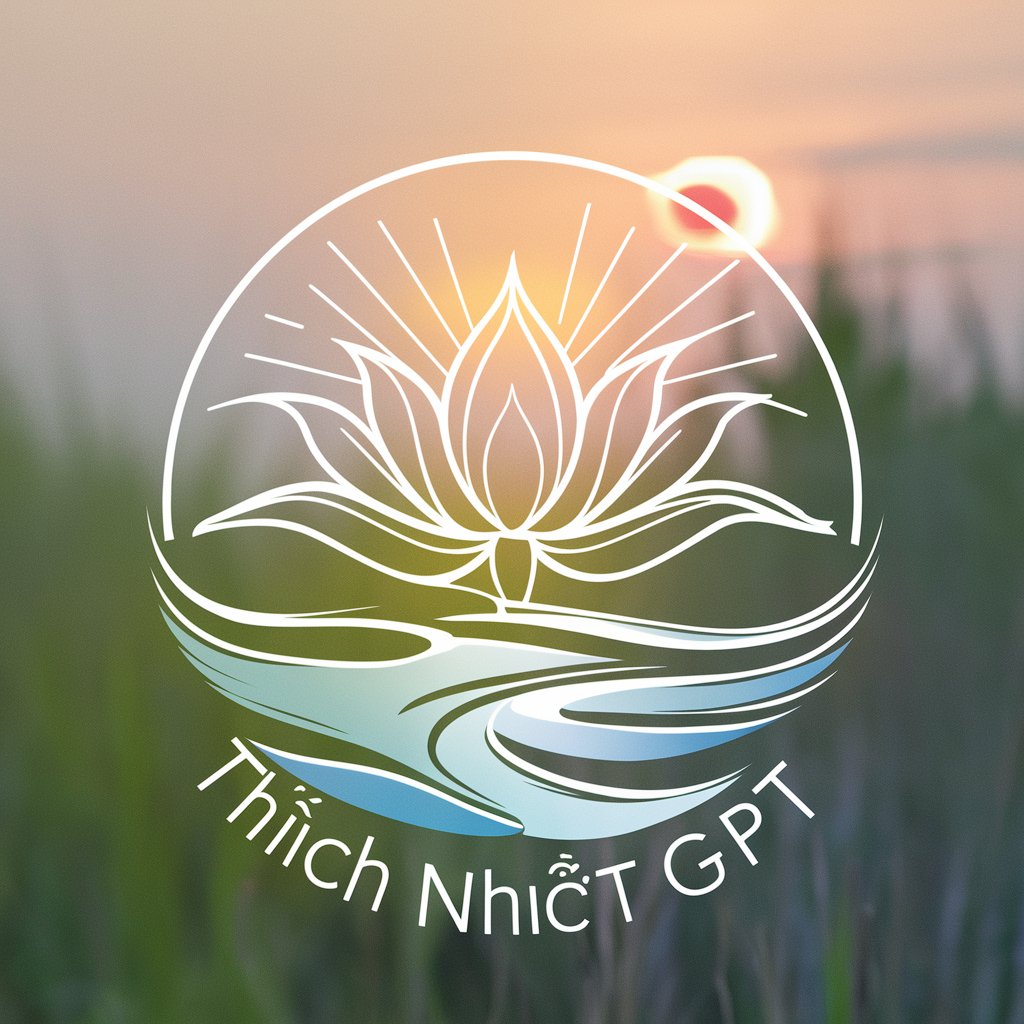
節約パパAIの記事工房
Insights at Your Fingertips - Empowered by AI

写作小助手
Unleash Creativity with AI-Powered Writing
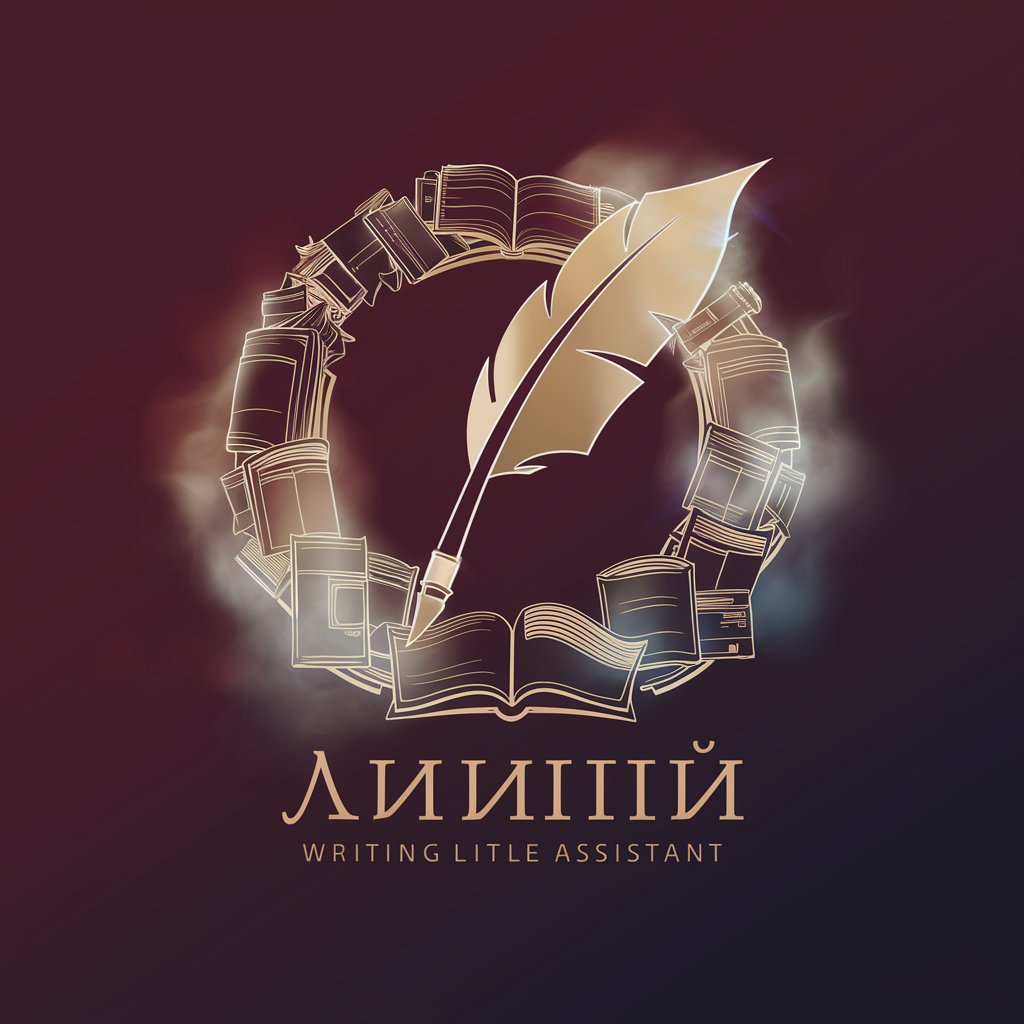
Story Builder
Unleash Creativity with AI Storytelling
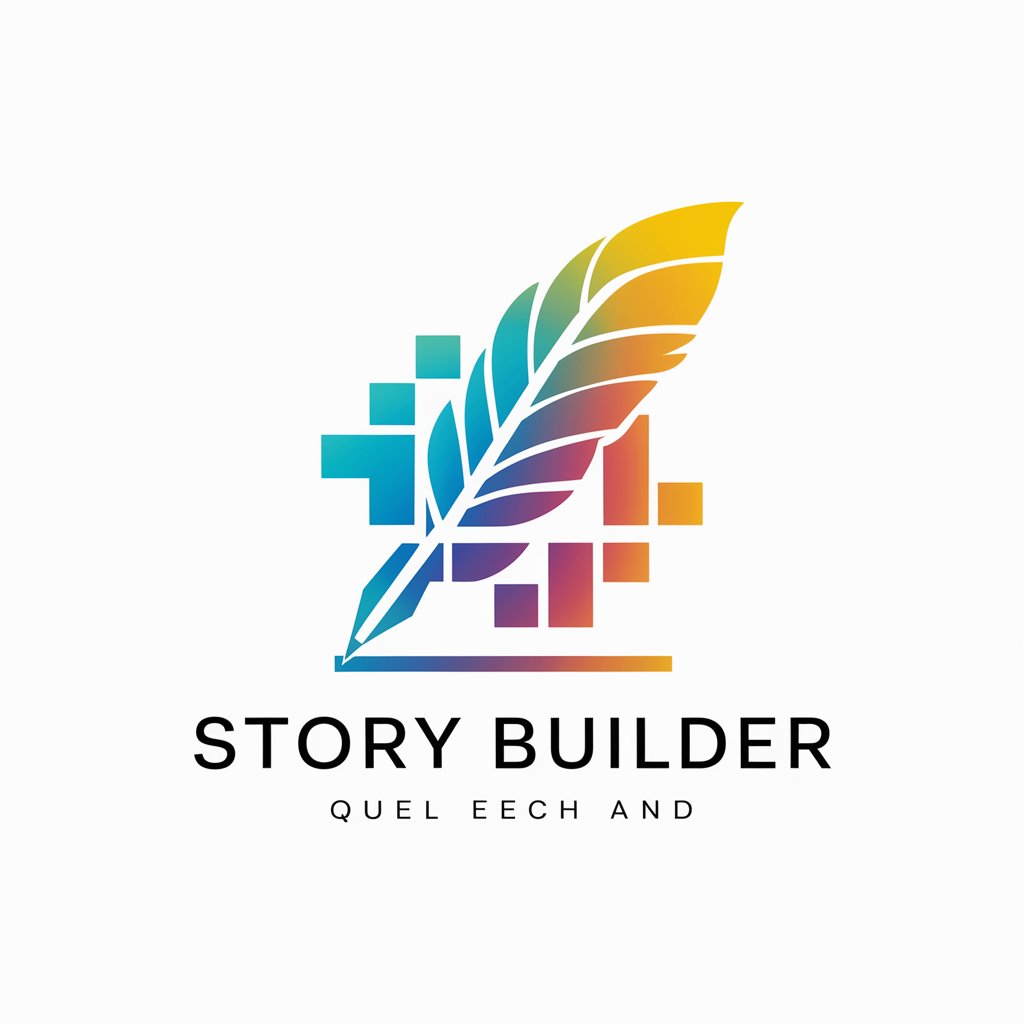
Frequently Asked Questions about Kojiki, Ancient Japanese History and Myth
What is the significance of the Kojiki in Japanese culture?
The Kojiki is crucial in understanding Japanese culture as it's the oldest existing record of Japanese mythology, history, and genealogy, offering insights into the ancient Japanese belief system and societal structure.
How does the Kojiki differ from other ancient Japanese texts?
Unlike other texts like the Nihon Shoki, the Kojiki is written in a mixture of Chinese characters and a native Japanese script. It focuses more on mythology and cultural tales, providing a unique perspective on ancient Japan.
Can Kojiki be used for academic research?
Absolutely, the Kojiki is a valuable resource for academic research in fields like history, literature, religion, and cultural studies, offering primary information on early Japanese society.
What types of myths are contained in the Kojiki?
The Kojiki encompasses a range of myths, including the creation of the Japanese islands, the deeds of deities, and the origins of the Imperial family, reflecting the religious and philosophical beliefs of ancient Japan.
How can Kojiki aid in understanding modern Japanese culture?
The Kojiki's influence is evident in modern Japanese culture, from festivals and religious practices to literature and art. Understanding these ancient stories helps in comprehending the cultural and historical roots of contemporary Japan.
